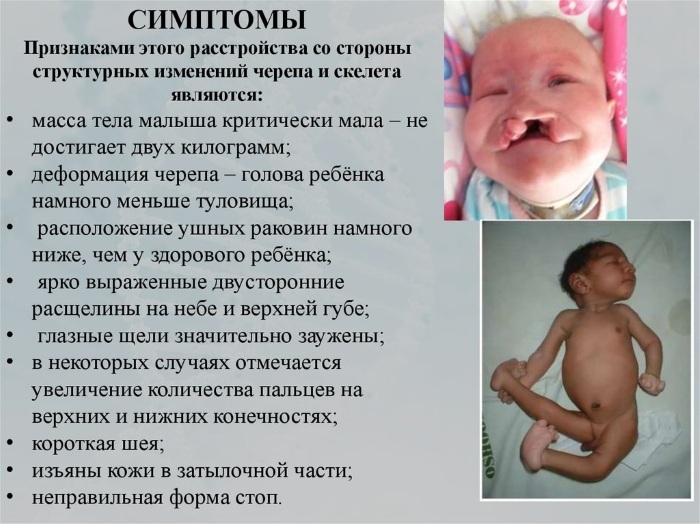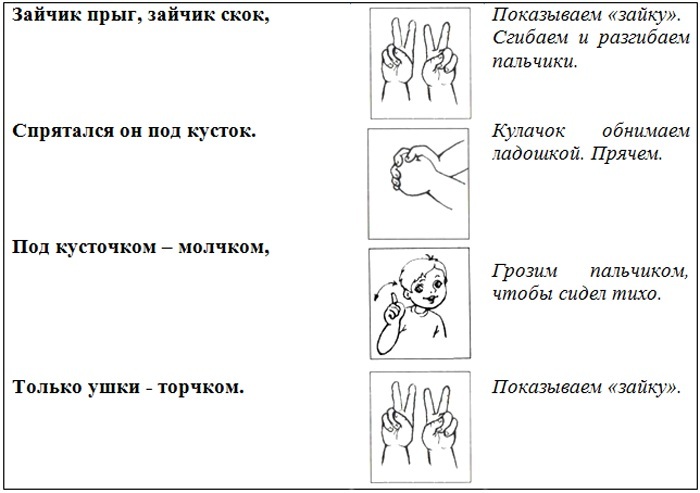Ankyloglossia - pathology, which is characterized by a shortened membrane, attaches the tongue to the mandible. This anomaly limits the movements of the tongue, which causes problems with speech. short frenum formation in infants occurs before birth.
The content of the article:
- 1 Reasons for tongue-tie in a child
- 2 How does the short frenulum: Signs
- 3 As a self-diagnose the problem in newborns
- 4 disease classification
- 5 Diagnostics short frenulum of tongue in newborns
- 6 therapies
- 7 Exercises for the correction
- 8 Operation
- 9 laser treatment
- 10 Is surgery necessary?
- 11 The optimum age for surgery
- 12 consequences ankyloglossia
- 13 The prognosis of tongue-tie in children
- 14 Video of a short frenulum of the child
Reasons for tongue-tie in a child
Formation of abnormal membrane can cause the following reasons:
- heredity;
- late pregnancy;
- blows in the stomach during pregnancy;
- morning sickness in the early stages;

- viral disease of pregnancy;
- pregnant contact with chemicals;
- unfavorable environmental conditions;
- stress.
How does the short frenulum: Signs
Short frenulum language the child is easily detected by external examination the doctor the baby. With this language pathology resembles a heart with a little pull down the tip.
Signs bridle anomalies in infants:
- smacking during feeding;
- bites the chest;
- increasing meal frequency;
- baby while feeding a long rest;
- underweight;
- rejection of the breast;
- whims when feeding.

Signs bridle pathology in children after one year:
- speech impairment;
- malformed bite;
- periodontitis;
- central bottom teeth bent inward.
External signs of anomalies:
- Language does not protrude beyond the mouth.
- The child does not get to lick his lips.
- Language does not reach up to the sky.
- When the tip of the forked tongue protruded.
- language in the middle of the recess is formed by pulling it forward.
- The lower incisors are curved.
As a self-diagnose the problem in newborns
The length of the normal ligaments child - 8 mm and above. Detect abnormalities can be yourself. To do this, pull the lower lip to grudnichok opened his mouth. If the tongue is attached at the tip and does not reach the lips, then a short frenulum.
You can also identify this pathology in newborns according to the following criteria:
- To touch the child's lower lip. However, he would get the language and begins to make rotating movements in search of food. If the bridle is short, then the baby will not stick language. He just can raise or lower it down.

- It is necessary to observe the newborn when he cries. If the frenulum is normal, the language will be raised up. When short - will be raised only the side of the tongue, and the middle part is not able to due to hold its membrane.
- Grudnichok with anomaly can not touch the language of heaven.
disease classification
Tongue-tie the child has 5 main types:
- Thin bridle with conventional fastening to the language, but insufficient length, which limits its mobility. When lifting up the language, at the site of attachment of the bottom membrane, mucous forms a triangle.
- Thin and translucent bridle small length, which are mounted over the tip of the tongue. When lifting up the language at the center there is a hole in the shape of a heart, and under the tongue mucosa in the form of a triangle.

- Compacted and short cords with fastening at the tip of the tongue. There are signs of a heart and a triangle.
- Thick and short membrane, fused with the muscle bundles of language.
- Bridle barely noticeable. Language completely spliced with the muscles. Movements of the tongue is absolutely limited.
Diagnostics short frenulum of tongue in newborns
Defect bridle can identify professionals such as pediatrician, surgeon, pediatric dentist, orthodontic specialist, speech therapist. Diagnosis of this anomaly occurs by visual inspection infant. It also helps to identify the defect bridle holding test E. Hazelbeykera, which determines the size of the membrane and the degree of mobility of the tongue.
Any discrepancies in the test are abnormal and indicate the ankologlossii.
In normal ligament length baby can easily reach to the lips and tongue palate.
therapies
There are several methods to remedy the disease bridle:
- Exercises for the correction;
- laser surgery;
- surgery.
Types of surgeries:
| Method | Description | Contraindications |
| frenotomy | The operation is performed under the light, and the average degree of anomaly. This membrane with cutting edge suturing mucosa. | A small amount of tissue for dissection. |
| Frenuloektomiya | The same operation as the frenotomy. The difference in the implementation of a cut by the cutters. | Hemophilia (a bleeding disorder) |
| Frenuloplastika | This technique is performed under severe anomalies. Produced from mucosal tissue cutting triangular shape with further stitching. | The presence of infections of the oral cavity. |
Exercises for the correction
In children with mild disease with the help of special exercises can correct the defect in the home. Speech therapists developed a set of highly effective exercises that help stretch shortened bridle language. With a systematic their implementation of and compliance with all the recommendations will be able to avoid surgery.
The complex of exercises:
- Swing. Open his mouth in a smile. Alternately, touch the tip of the upper and lower rows of teeth language.
- Football. Alternately push the tongue, then the left cheek, then his right.
- Painter. Open his mouth in a smile. Move the tongue along the sky from the teeth to the throat. The jaw should be fixed.
- Kitten. Put jam on a saucer or other treat. The child should lick it without the help of the lips. This assignment strengthens the muscle ligaments language.
-
Drum. Stretch in the upper row of teeth tongue clearly and quickly repeat the letter "e" with an open mouth. The child did not close his mouth, what you need to help with an object such as a pencil, to keep it open.

- Harmonic. Firmly stretch the language of the sky and, without moving them, one by one, then opened and closed his mouth.
- horse. Produce clicks tongue, imitating the sound of hooves. The lower jaw is immobilized.
- Fungus. Press the tongue against the palate with a force (the language - this hat fungus, and the membrane - leg).
- Open mouth smile. Tongue touch the nose and then lower to the upper lip. In this case, the lips are not moving.
- Tongue touch chin. The following will do it, the sooner membrane stretch.
When performing such exercises can use the additional items (a teaspoon, tubes, pencils) to help your child achieve results faster.
Operation
Tongue-tie the child is easily corrected by surgery. Before the operation expert drew attention to the child's age, the degree of complexity of the disease and its location.
Removal of the defect is performed under local anesthesia. The surgeon makes an incision a special tool, and then sutured. May open a little bleeding. By the time this procedure takes about 30 minutes.
The recovery process after operation lasts up to 10 days. At this time the swelling will be present in a child, pain, discomfort.
It is necessary to:
- exclude from the hot and spicy foods;
- conduct oral hygiene;
- perform special exercises for rapid resorption of scars;
- observe the rest of speech;
- consult with a speech therapist to correct speech defects.
laser treatment
To correct bridle pathology is also used laser trimming. This method of treatment is more gentle, so more suitable for younger children.

Advantages of laser operation:
- rapid healing;
- sealing of the wound;
- no seams;
- no bleeding;
- sterilization cuts;
- duration of the operation (10 min.).
The laser treatment takes place without complications. After the procedure you need to follow all the doctor's instructions (same as after surgery with a scalpel).
Is surgery necessary?
A decision on the need for surgery to remove the defect should take such doctors as a podiatrist, speech therapist and surgeon. It depends on when it was revealed ankyloglossia (child's age), as well as the individual characteristics of the anomaly.
Doctors often prescribe an operation in 1-2 years after discovery of the defect, as during this time the bridle can be stretched to the desired size during the growth of the baby.
Indications for which the operative intervention is recommended:
- difficulty in eating;

- malformed bite;
- offset rows of teeth;
- speech defects (if not assisted by other methods).
The optimum age for surgery
Doctors recommend to carry out the operation to eliminate the pathology bridle children under 1 year. The younger the child, the easier the procedure will be held for him. At this age, a weak membrane, has no capillaries and nerve endings. The operation is performed without anesthesia.
If a child over 4 years old are speech defects, and for stretching the frenulum exercises do not help, it is necessary to solve the problem surgically. At this age, the procedure causes discomfort and pain. The operation is performed using local anesthesia and sutures.
consequences ankyloglossia
Short language the child bridle leads to such effects:
- suspension forming a lower jaw;
- malocclusion;
- curvature of the lower teeth;
- change in the form of language;
- occurrence of caries;

- impaired speech development;
- Insufficient chewing of food;
- occurrence of snoring.
The prognosis of tongue-tie in children
If early detection and the operation ankyloglossia outlook for children is positive. After the procedure, normal breathing, eating, weight gain. Early treatment prevents disease bridle malocclusion and speech defects.
If surgery is performed on older children, you can resolve problems with speech you must attend a speech therapist.
Correction pathology bridle exercises for stretching the membrane requires regular execution and patience. This technique is effective in children less than 5 years. How to choose a method of treatment for a shortened frenulum of tongue in children parents decide. The main thing - in a timely manner to eliminate the anomaly, the baby developed normally.
Registration of the article: Lozinski Oleg
Video of a short frenulum of the child
Presentation on tongue-tie in the child:



